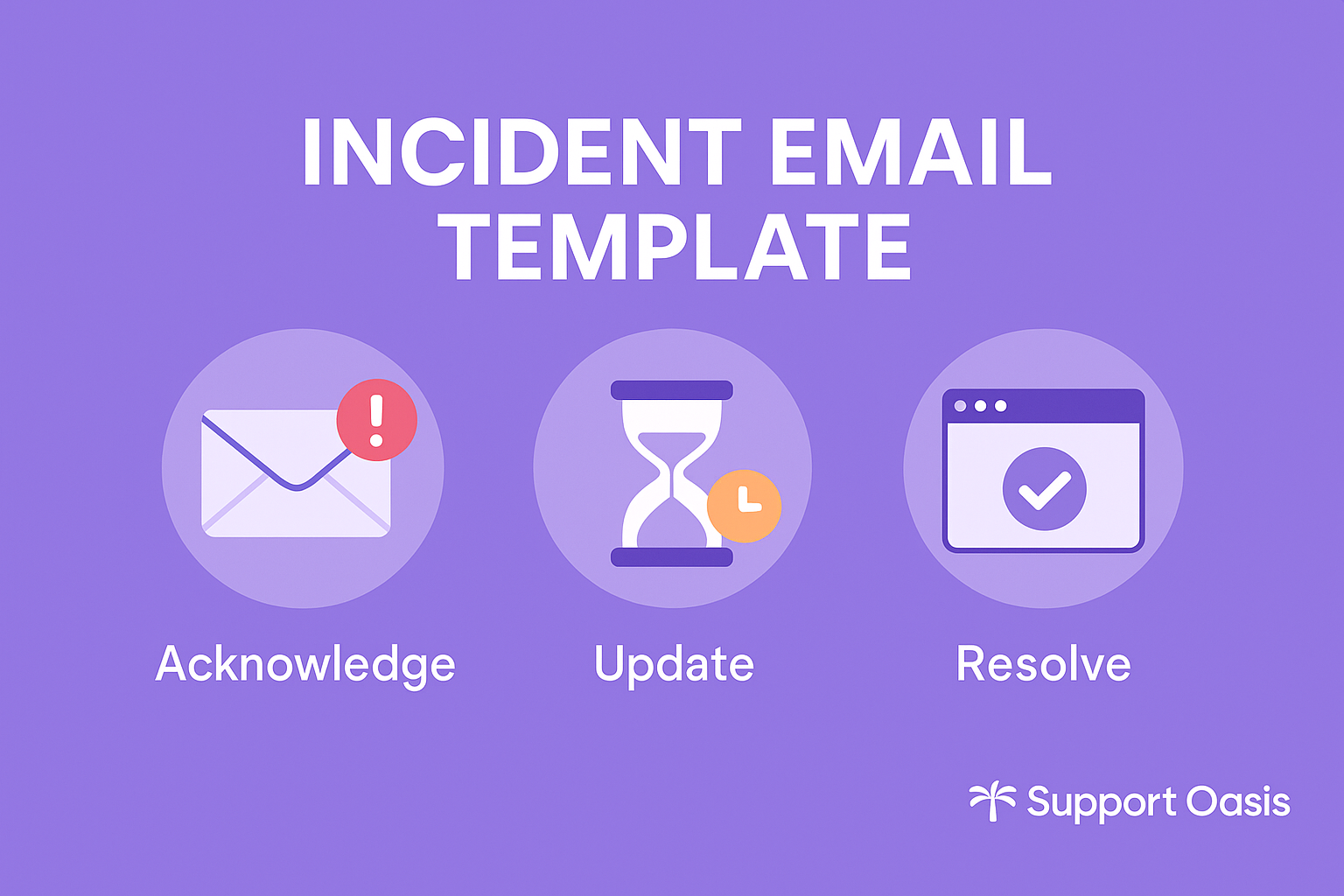An incident email template helps small teams communicate outages with speed and consistency. As a result, customers stay informed, support volume drops, and your team avoids rewriting messages during stressful moments.
Incident Email Template: What to Include
Define the essentials first. Therefore, every message should contain:
- What happened in plain language.
- Who is affected and the scope.
- What you are doing and the next update time.
- Where to check status and how to get help.
For fast setup that supports clear communication, see How to Set Up a Helpdesk for Your Small Team in One Day and Email-Based Helpdesk: Simple Setup for Small Teams. For deeper best practices, review Atlassian’s guide to incident communication and Google’s SRE chapter on incident response.
Outage Communication Cadence
First, send an acknowledgment as soon as you confirm the incident. Next, provide updates on a predictable schedule, such as every 30–60 minutes for high impact. Then, post a resolution note with a short summary and any follow-up steps. Finally, log a brief internal review so you can improve templates later.
Incident Email Template: Initial Acknowledgment (copy-ready)
Subject: Service incident acknowledged
Body:
Hi {first_name},
We identified an incident affecting {product/feature}. Users may experience {impact}. Our team is investigating now. The next update will be by {time}. For status, see {status_page_link}.
Thanks for your patience,
{agent_name}
Incident Email Template: Ongoing Update
Subject: Service incident update
Body:
Hello,
We are still working on the incident affecting {product/feature}. Since the last update, we {action taken}. Our next update will be by {time}. Details are on {status_page_link}.
Regards,
{agent_name}
Incident Email Template: Resolved Notice
Subject: Service incident resolved
Body:
Good news. The incident affecting {product/feature} is resolved. The cause was {root cause in simple words}. We implemented {fix}. If you still see issues, reply to this email so we can help.
Thank you,
{agent_name}
Roles, Priorities, and Handoffs
Assign a clear owner for customer emails while engineers focus on recovery. In addition, set two priorities for cadence: High (updates every 30–60 minutes) and Normal (updates every 2–4 hours). Consequently, customers know when to expect the next message, and your team avoids ad-hoc decisions. For tone and speed, use Helpdesk Saved Replies: 15 Templates for Small Teams.
Status Page and Help Center Links (synonym in H3)
Link to a status page or a single help article so readers have one source of truth. Moreover, reuse the same URLs across every update to reduce confusion.
Common Mistakes and Quick Fixes
- Vague language. Instead, describe impact in simple terms customers use.
- Inconsistent cadence. Therefore, schedule the next update time in every email.
- Too many links. In addition, include one status link and one support contact.
- No owner. Finally, assign a communicator for the duration of the incident.
Final Thoughts
A clear incident email template turns chaos into calm. In conclusion, define the essentials, set an update cadence, and reuse copy-ready messages so customers understand what is happening and when it will be fixed.
Ready to communicate incidents with confidence?
Try Support Oasis for free to send consistent updates, manage priorities, and track responses in one place. Try for free or learn more about Support Oasis.
